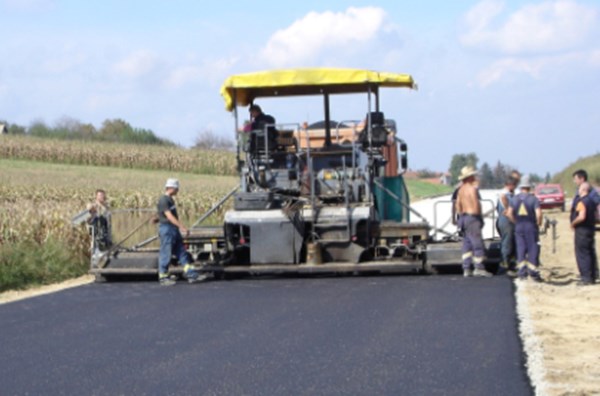Build and manage better road networks
- Home
- HDM-4 Version 2
- New in Version 2
- Improved Usability & Configuration
Improved Usability & Configuration
Intervention Editor & Work Item Triggering Logic
The definition of the triggering logic of work items and improvements has been simplified and improved by the introduction of an improved intervention editor. The main areas of improvement are:
• The need to select scheduled or responsive intervention mode for a work item has been removed
• The predefined limit parameters associated with the triggering logic are now optionally entered in the intervention editor as part of the main trigger expression.
• The triggering of works has been extended to allow the combination of AND /OR logic operators.
• Works can now be scheduled to occur in set years rather than just periodically.
• The user is no longer constrained to select a trigger attribute from a pre-defined list. The recommended triggers for a particular work item may be ignored (in fact any trigger can be used with any work type).
Alternatives User-Interface
The user interface in Version 1.x was reported by many users to be cumbersome with many features hidden behind several levels of screens / dialogs with a multiplicity of confusing buttons. To address these concerns the user interface for the definition of analysis alternatives has been redesigned to reduce the number of dialogs and buttons involved, to improve navigation through the alternatives in a familiar style, and to give improved view to the user. The new user interface allows the user to navigate through the alternatives and its assignments using a view similar to the windows explorer directory navigation tree, and uses a context sensitive spreadsheet-type view that facilitates the assignment of maintenance and improvement standards from one dialog.
The model DLL architecture
The model architecture has undergone some revision to improve maintainability, flexibility, and to allow future customisation. Some parts of the analysis framework have been revised to take advantage of these architectural improvements. To the general users these changes will not be visible.
Post-Improvement Maintenance Standards
It is now possible to assign a maintenance standard to be applied after a road improvement standard has been applied (i.e. the maintenance standard will only be applied if the associated improvement is triggered). This facility is implemented in the new alternatives user-interface.
Temporary Exclusion of Sections from Study
When setting up a project analysis it is now possible to select a section for the study, assign the traffic growth set and define its alternatives, but then exclude it from analysis without loss of data (traffic, alternatives, etc.). This was identified by users to be a useful function if several sections have been selected in a project analysis and there is the need to focus on defining and refining the assignments of one section at a time without the overhead of analyzing all the other sections each time.
Calibration Sets
Calibration Sets have been introduced to allow users to define sets of section calibration coefficients (a calibration item ) for the range of pavement types commonly found on their road network. Sections which have the same characteristics can all use the same calibration . The process of defining a section has therefore been simplified as a user now has only has to select an appropriate calibration item for the section's known characteristics rather than supply values for all the calibration parameters.
Calibration sets are stored under the Configuration folder in the workspace view. When a new road network is created a calibration set for that network is selected, and all sections within the network must be assigned a calibration item defined in that calibration set. To facilitate the new concept of calibration items as section's attributes have been reorganized.
Improved Configuration - Accident Classes
A new HDM-4 data type has been provided to allow the user to model accident effects separately from speed flow types.
Improved Configuration - Speed Flow Types
An explanatory graph has been added to the user interface to explain the relationship between the capacity characteristic parameters. To reflect the correlation between road type, and capacity characteristics, and to improve consistency, the Number of Lanes ( NLANES ) parameter has been moved to the Speed Flow Type item from the road section.
Improved Configuration - Traffic Flow Patterns
A graph is now shown on this dialog to reflect the flow distribution data entered by the user. As the user changes this data, the graph changes accordingly. The graph is intended to improve user feedback, and to engender understanding of the effects to the flow distribution data.
Improvement Standard Effects
After-work attributes for some improvement effects can now be defined either in terms of the change in attribute value or in terms of the final value of the attribute (i.e. either in relative or absolute terms). This is intended to make improvement standards less section specific, so that they can be applied to a group of sections.
-
Find out about the technical support service offered by HDMGlobal to help users use HDM-4 effectively.
-
For existing HDM-4 users, view the latest software release and the changes made before registering to receive the updates.
-
Find out about HDM-4 training courses offered by HDMGlobal and their partner organisations and other related events.








